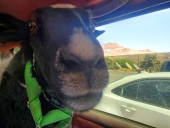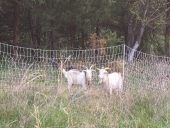
 2
2






Our Destination is Our Legacy
www.peacefulvalleyfold.com
 6
6





 5
5




- Tim's Homestead Journal - Purchase a copy of Building a Better World in Your Backyard - Purchase 6 Decks of Permaculture Cards -
- Purchase 12x Decks of Permaculture Cards - Purchase a copy of the SKIP Book - Purchase 12x copies of Building a Better World in your Backyard
 4
4




Ned Harr wrote: First, thanks for that thread title, it's the best thing I've read on the internet today.
Second, I'd be surprised if the two things were correlated because they seem like they'd be controlled by totally different genes. You say you've noticed a possible correlation in the sheep, but just knowing the very little about genetics that I do know, I'm still skeptical, unless these two particular traits are for some peculiar reason linked in ungulates.
Still, I am not an expert in anything remotely related to this, and the only animal I've ever bred is myself, so take my above comments with a dome of salt and good luck in your goat quest!
Our Destination is Our Legacy
www.peacefulvalleyfold.com
 1
1




Timothy Norton wrote:
Split scrotum's are disqualifiers for breed judging because splits have been correlated to breed poorer udders. Longer splits seem to correlate with worse udders compared to smaller splits.
 2
2




 3
3




 !
! 3
3





|
Why fit in when you were born to stand out? - Seuss. Tiny ad:
A rocket mass heater heats your home with one tenth the wood of a conventional wood stove
http://woodheat.net
|


